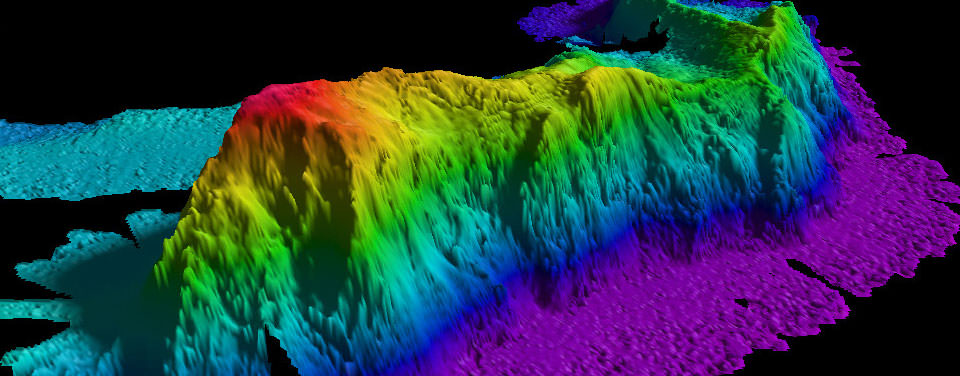What is a guyot?
A guyot, or seamount, is an undersea mountain.

A sonar image of a guyot, or seamount, in the Arctic. Using a multibeam echo sounder, NOAA scientists can map and produce a visualization from the data collected of the bottom of the ocean.
Guyots support a wide range of organisms, such as this unidentified cnidarian that resembles a Venus flytrap, found on the slopes of the Davidson Seamount.
Seamounts are formed by volcanic activity and can be taller than 10,000 feet. They can be isolated or part of large mountain chains. The New England Seamount contains more than 30 peaks that stretch 994 miles from the coast of New England.
Seamounts often have a high level of biological productivity because they provide habitats for many species of plants and animals. Over 200 species of sea creatures have been observed at a single guyot in the New England Seamount. Seamounts are great locations to discover new species because each seamount houses different types of animals, including many that can only be found in guyot habitats.
Seamounts are home to many commercial fish and are therefore very beneficial to our economy. Seamounts are also important to the field of medicine, as any number of undiscovered species may lead to new drugs or medical treatments.